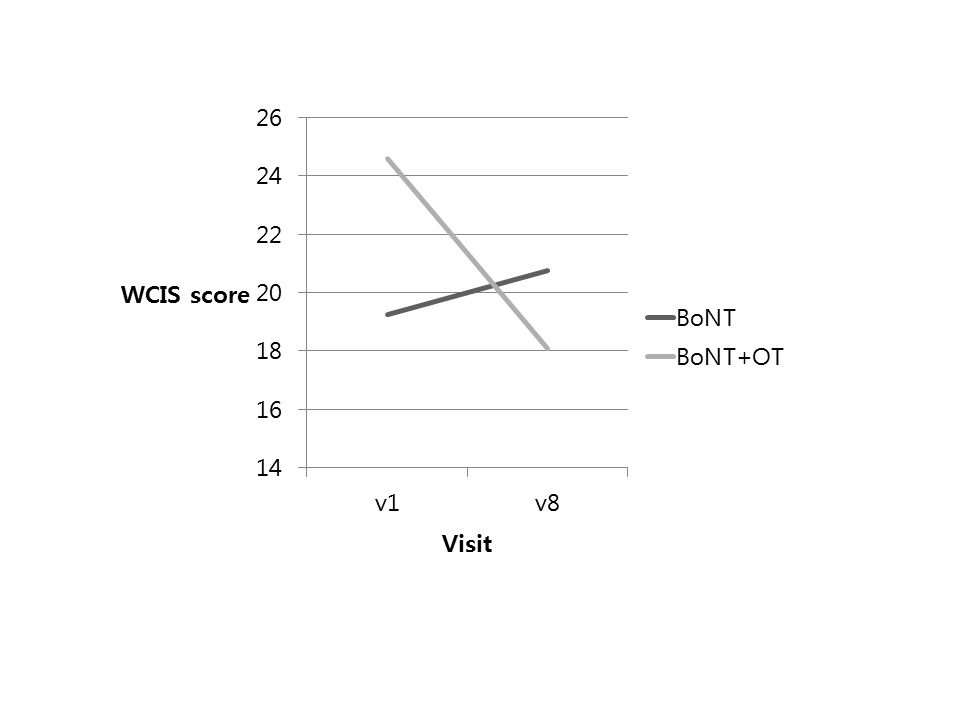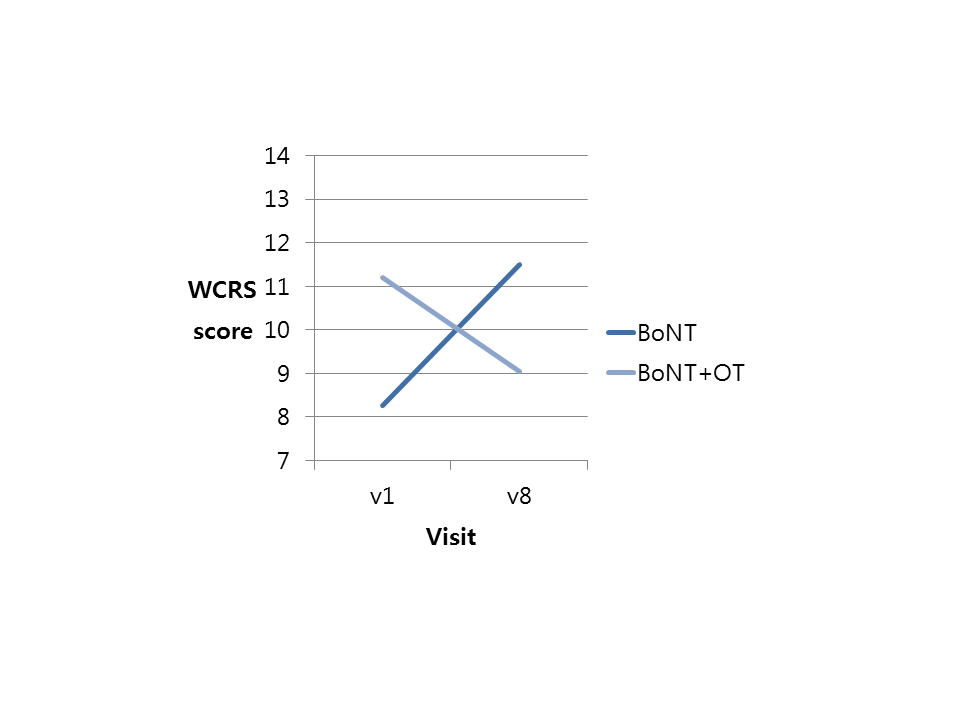Session Information
Date: Sunday, October 7, 2018
Session Title: Dystonia
Session Time: 1:45pm-3:15pm
Location: Hall 3FG
Objective: We aimed to compare the effects of botulinum toxin (BoNT) therapy alone with a combination of BoNT and occupational therapy on patients with writer’s cramp as measured by a patient-rated subjective scale.
Background: Writer’s cramp (WC) is a form of focal hand dystonia, for which focal BoNT injections are the current best therapy. Past studies have shown that some types of rehabilitative therapy can be useful. We hypothesized that BoNT together with a specific type of occupational therapy would be better than BoNT alone for treating patients with WC.
Methods: Twelve WC patients were randomized to two groups. 6 patients received only BoNT therapy and 6 patients received BoNT therapy and occupational therapy. The occupational therapy involved specific exercises of finger movements in the direction opposite to the patient’s dystonic movements during the writing task. Therapy was performed with splints made to suit the individual patient. The primary outcome was the patient-rated subjective scale at 20 weeks. Secondary, exploratory outcomes were assessed by four blinded raters of the videotapes via several scales, including the writer’s cramp rating scale (WCRS), writer’s cramp impairment scale (WCIS), and the writer’s cramp disability scale (WCDS). Writing parameters obtained via handwriting analysis program were also analyzed.
Results: The patient-rated subjective scale scores at 20 weeks were not significantly different between the two treatment groups. WCIS and WCRS scores (27% and 18%, respectively) were significantly improved with combination therapy compared with BoNT alone.
Conclusions: The study was powered on the expected effect size of the primary outcome measure of subjective improvement; this was not achieved. However, the secondary measures were suggestive indicating a major limitation of sample size. Therefore, further study of occupational therapy methods to improve the efficacy of BoNT seem worthwhile.
References: 1. How to assess motor impairment in writer’s cramp. Zeuner KE1, Peller M, Knutzen A, Holler I, Münchau A, Hallett M, Deuschl G, Siebner HR. Mov Disord. 2007 Jun 15;22(8):1102-9. 2. Botulinum toxin in writer’s cramp: objective response evaluation in 31 patients. Wissel, J., et al. (1996). J Neurol Neurosurg Psychiatry 61(2): 172-175.
To cite this abstract in AMA style:
J. Park, E. Shamim, O. Panyakaew, P. Mathew, C. Toro, J. Sackett, B. Karp, C. Lungu, K. Alter, B. Hodsdon, M. Villegas, T. Wu, O. Ahmad, P. Srivanitchapoom, S. Auh, M.. Pilot trial of botulinum toxin and occupational therapy for Writer’s Cramp [abstract]. Mov Disord. 2018; 33 (suppl 2). https://www.mdsabstracts.org/abstract/pilot-trial-of-botulinum-toxin-and-occupational-therapy-for-writers-cramp/. Accessed April 20, 2025.« Back to 2018 International Congress
MDS Abstracts - https://www.mdsabstracts.org/abstract/pilot-trial-of-botulinum-toxin-and-occupational-therapy-for-writers-cramp/


